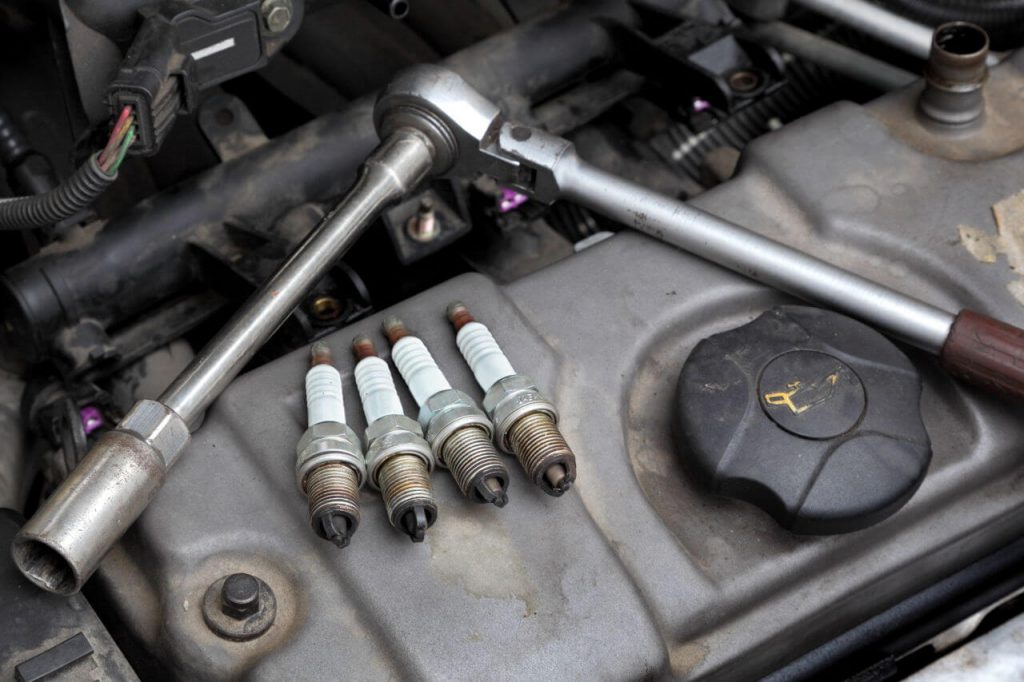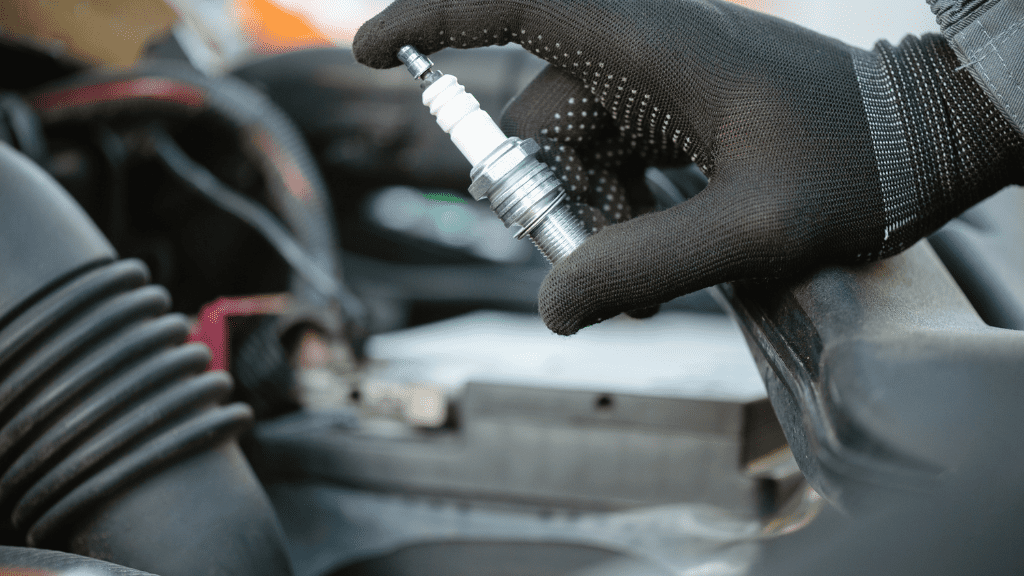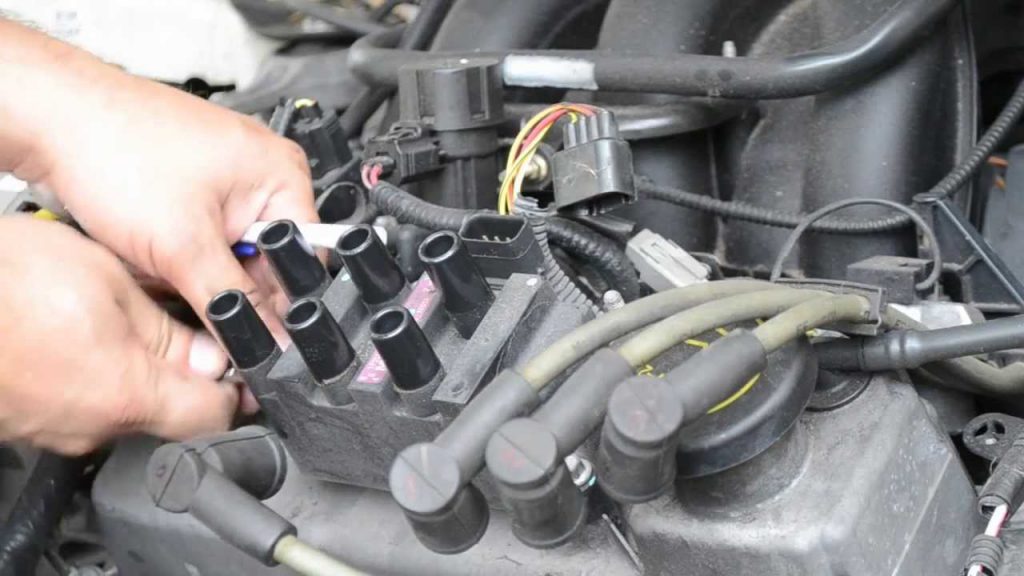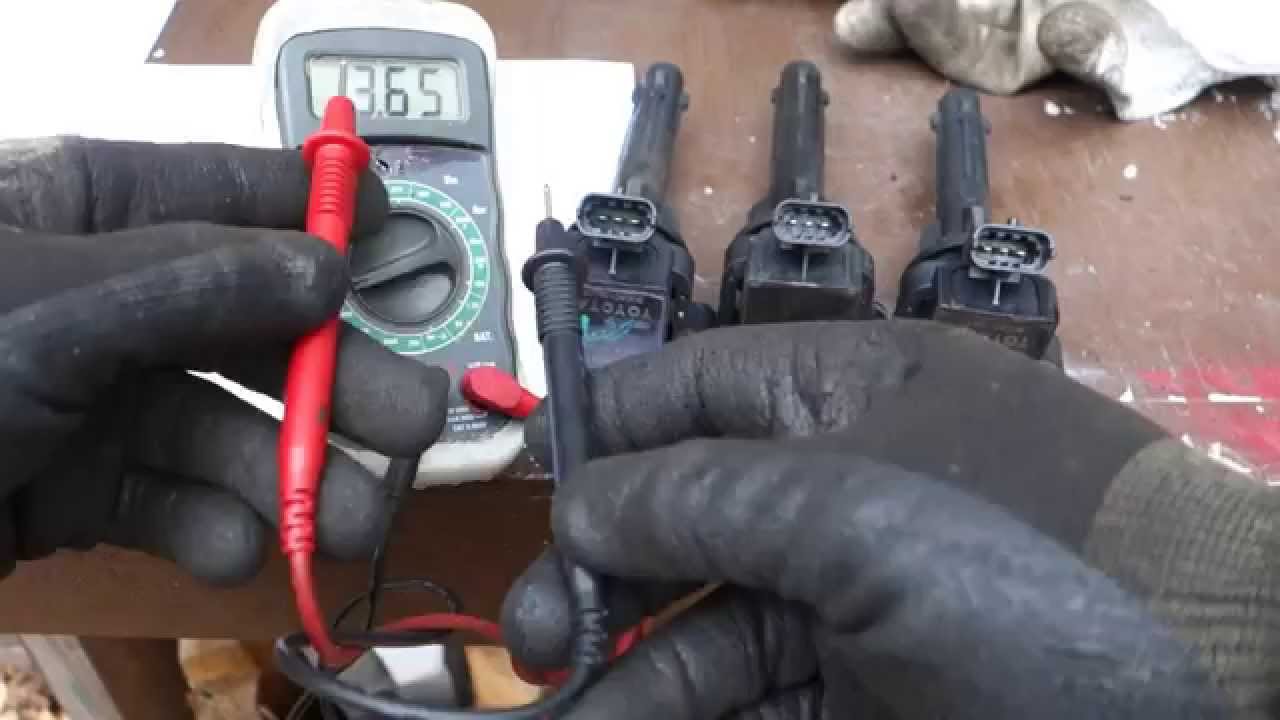Knowing how to test ignition coil with multimeter is one of the most necessary maintenance tasks because the ignition coil is a vital part of the vehicle’s ignition system supplying electric current to the spark plugs. When the car fails to start or stalls frequently, the ignition coil may be damaged and need to be replaced. A few simple tests can determine if the sparking coil is functioning well and keep your car as fresh as possible.
Contents
The Basics Of The Ignition Coil
Ignition components play an unchangeable role in the engine’s ignition system. Learning and understanding the details of this part will help drivers recognize early signs when it is faulty and replace them in time.
In more detail, the ignition system is one of the three crucial elements of an internal combustion engine, besides compression and air-air mixture. And in that, the ignition coil is the part that plays a core role in the system.
What is a car ignition coil?
An ignition coil or bobbin is a part of the car’s ignition system responsible for generating high-voltage currents that help spark plugs release sparks to ignite the air-air mixture in the engine’s combustion chamber. This combustion creates pressure that pushes the piston to move and transmits force to the crankshaft to generate work.
Structure of ignition coil
Ignition coils on cars are made up of 3 main components, including:
- The iron core is located in the middle of the bobbin, tightly inserted in an insulating carton tube.
- The primary coil is wound around the iron core. The end of the wire is connected to the battery and the ignition IC.
- The secondary winding also wraps around the iron core 100 times more than the primary coil. The secondary terminal connects to the battery and the spark plug.
All are housed in a steel tube with an insulating porcelain bottom, and the cap also uses high-grade insulating materials.
There are mainly four types of ignition coils used in cars:
- Common to the entire ignition system
- Common twin type for 4-cylinder engines)
- General triple for 6-cylinder engines
- Individual for each cylinder, double
The common twin and triple coils will generate sparks simultaneously in the cylinders operating in the same phase.
The working principle of the ignition coil
The coil is designed to act as a transformer, responsible for generating high voltage to create sparks.
When starting the engine, the engine ECU of the car brain box will signal the ignition timing. At this time, the battery will let current flow through the IC and into the primary coil to form magnetic lines of force.
The IC then quickly interrupts the current to reduce the flux, creating an electromotive force in the direction that counteracts the decrease in flux. At this time, the secondary coil also generates an electromotive force of about 30kV, which is transmitted to the spark plug to form a spark.
Because the number of turns of the secondary coil is one hundred times more than that of the primary coil, the electromotive force generated by the secondary coil will be very large. In addition, the larger the current in the primary coil, the greater the voltage in the secondary ignition coil.

Signs of failing ignition coil within the system
The car bobbin (ignition coil) plays a key role in creating combustion in the engine combustion chamber. So, if the bobbin fails, the spark plug will be under-malfunctioning at the same time. This faulty act can reduce combustion efficiency, affecting the power, smoothness, and overall car engine operation and performance.
Here are some typically-seen signs of a failing ignition coil that you should keep an eye on before heading to the ‘how to test ignition coil with multimeter‘ part.
The car has black smoke and gives off a strange smell
Malfunctioning spark plugs will cause incorrect ignition timing, and weak spark plugs lead to incomplete combustion of fuel. This amount of fuel will go through the exhaust pipe to the outside. If the exhaust temperature is too high, this fuel can ignite, causing the engine to backfire. The telltale signs are that the exhaust pipe emits black smoke or fuel smells and may ignite a strange explosion.
More fuel consumption than usual
Vehicles using more fuel than usual can be due to many reasons, one of which can be due to a faulty spark plug. When the turbine is damaged, the fuel is not completely burned, so to ensure the operating pressure, the engine must increase the amount of fuel injected into the combustion chamber.
Motor vibration, jerking, irregular speed
The engine loss of fire leading to vibration, jerking, and weakness are the most observable signs when the car’s spark plug has a problem. When the generated voltage is not large enough, the motor will lose fire (also known as stalling). The loss of one or two engines will cause the engine speed to be uneven, not smooth, leading to the car jerking when on the gas, and there may be a feeling of “stopping” when accelerating.
Car stalls suddenly
A damaged ignition coil can cause a moving vehicle to stall suddenly because the ignition coil that does not ignite will result in the fuel not being burned.
Engine hard or not starting
A faulty ignition coil can cause a fire loss in some or all cylinders, resulting in little or no work. This issue makes the engine difficult to start or even impossible to idle.
>> Check Now: Think Car Won’t Start? Don’t Get Fed Up, Try These Solutions Instead!
The Check Engine light on
A bright Check Engine light is a sign that indicates the engine or related components are having problems. If the ignition coil is damaged, the central system will receive the error and send a message through the Check Engine error light.
How To Test An Ignition Coil
A damaged ignition coil causes the ignition of the engine to fail, affecting the performance of the car. Therefore, vehicle users need to check regularly to prevent unpredictable damage and to handle or prevent consequences in time.
Overall, there are 2 methods of testing the ignition coil. One is a multimeter coil resistance test, and another is a spark test. In particular, the spark test method is applied quite commonly because of its simple operation and high accuracy. On the other hand, the multimeter test method has also been trusted and applied more widely thanks to the convenience of supporting tools.
Things to keep in mind before and during testing ignition coil
Before taking up your sleeves to do any engine or idling-related project, you should always take notes on these safety notices on how to test small engine ignition coil with multimeter. These are indispensable warnings that you should not forget at any time because they will not only keep your safety to the utmost but also ensure that your every action does not trigger or spark severe harm. The notices are listed as follows.
Wear thick rubber gloves
With the ignition coil, even when testing or just checking the component, remember to wear thick rubber gloves during the full-time contact with the energy and power-exposure source. These gloves will protect your hands from harmful chemicals in car engines and batteries.
Gloves will also protect your hands from exposure to rust around various parts of the engine. The last and most important thing is that rubber gloves can protect you rather comprehensively from possible electric shock. Because you will be working with spark plugs and batteries that can generate electrical energy, which can put you in absolute safety without auxiliary and protective tools.
Moreover, in any unexpected and unfortunate event when the electrolyte accidentally gets on your skin, body, or clothing, even with a small amount, you should still wash it off with a mixture of baking soda and water as quickly as possible.

Make sure the car engine is completely off
People tend not to turn off the engine when working with car parts to check their operation immediately. But the truth is that when you leave the engine running unattended, there is likely that you will get an electric shock from the spark plug when you are trying to check the ignition coils of your car.
In principle, the bobbin will produce combustion gas and also transmit electricity during the combustion of fuel for the vehicle to run. So make sure the engine is off before starting any related work. Also, choose a suitable workplace, such as in a well-ventilated environment.
How to test ignition coil with multimeter
Step 1: Remove the ignition coil from the car
If you can use a multimeter that measures resistance, you can measure the efficiency of the ignition coil quantitatively and not in the somewhat subjective way described above. To begin this test, however, you need to remove the bobbin so that you can easily access its terminals.
Refer to the repair manual for exact instructions on removing the bobbin.
Usually, you need to disconnect from the distributor wire, then remove the screw that secures it. Make sure your vehicle is turned off and cooled down before starting the process.
Step 2: Find the standard resistance of the ignition coil
Each vehicle’s ignition coil has its standard for coil resistance. If the actual resistance of the coils falls outside these standards, you know your bobbin is damaged.
Usually, you should be able to find the resistance standards for your bobbin by consulting the repair manual. However if you cannot find it, you can contact your dealer or via info on the internet. Most car bobbins will have a standard resistance of about 0.7-1.7 for the primary coil and 7,500 – 10,500 Ω for the secondary coil.
Step 3: Place the ohmmeter probes on the primary coil terminals.
The ignition bobbin will have 3 electrodes + 2 poles on the sides and 1 pole in the middle.
Turn on your multimeter and touch each multimeter’s measuring tip to the 2 outer electrodes. Read and write resistance value – this is the resistance value of the primary winding.
Note that some of the newer bobbins have a different structure from this traditional arrangement. Refer to the vehicle manual for information if you are not sure which connection electrodes correspond to the primary coil.
Step 4: Place the ohmmeter’s probes on the secondary coil’s electrodes.
Next, hold the probe on one of the two electrodes and touch the other probe to the center contact, (where the main high voltage wire connects to the distributor).
Read and write the resistance value of the secondary coil.
Step 5: Determine whether the readings match your vehicle’s specifications.
Ignition coils are delicate components of a vehicle’s electrical system. If the resistance values of the primary and secondary coils are out of specification by even a small amount then you should replace the spark plug as it may be damaged.
How to perform a spark test
Step 1: Turn off the machine and open the bonnet.
Like most types of maintenance, start with the vehicle parked and the engine off. Open the bonnet to locate the ignition coil. Although its exact location may vary from vehicle to vehicle, it is typically located near the fenders or bolted to a frame close to the distributor.
Note that for vehicles without a distributor, the spark plug will be connected directly to the ignition coil.
A surefire way to find the bobbin is to locate the distributor and trace the common high-voltage wire that doesn’t connect to any spark plugs. Before you begin, make sure you are wearing goggles or other eye protection and that you are using insulated tools to prevent electric shock.
Step 2: Remove one of the high voltage wires from its spark plug.
Next, remove the high-voltage wire of 1 spark plug.
Usually, these wires run from the distributor cap to each spark plug. To avoid injury, use insulating gloves and tools when working with your vehicle’s electrical system.
If your car has been running for a while, its internals can get very hot. Typically a vehicle that has been driven for about 15 minutes can warm up the engine to about 200 degrees F. Park and let cool for an hour to avoid injury.
To save time and avoid damaging your vehicle’s spark plugs, use a test spark plug instead.
- Instead of attaching the vehicle’s spark plug to the wire, attach the test spark plug to the wire.
- Ground for the mass clamp.
- Then have someone else start the engine, looking for sparks in the middle of the test spark plug gap.

Step 3: Remove the spark plug with the spark opening tube.
Once you have removed the spark plug high voltage wire, remove the spark plug. The simplest is to use a specialized tool called a spark plug opener. From now on be careful not to let anything fall into the hole you just removed the spark plug.
If small pieces get into the combustion chamber, it can cause great damage when the engine is running. At that time, it is very difficult to remove these pieces from the combustion chamber. So it’s best to take precautions to make sure that doesn’t happen.
Cover the hole with a clean rag or towel to prevent small pieces from entering the combustion chamber.
Step 4: Reattach the spark plug to the high voltage wire or wire.
Now carefully reinsert the spark plug into the high voltage wire or wire. You should leave the spark plug connected to the distributor but not in the spark plug hole. Handle them with an insulator to avoid electric shock.
Step 5: Touch the threaded part of the spark plug to any metal on the engine.
Next, deftly position your spark plug (the wire is still attached) so that the “threaded” part of the spark plug touches a metal part of the engine. Again, be sure to grip the spark plug securely with pliers or gloves. Do not risk the risk of electric shock by ignoring this simple safety measure.
Step 6: Remove the fuel pump relay or fuse.
Before you start the engine to check the spark plugs, it is necessary to disable the fuel pump.
- Failure to remove the fuel pump relay means that the cylinder under test is still flooded with fuel but there will be no combustion since there is no spark plug. This can also cause serious damage.
- Check the manual to locate the fuel pump relay.
Step 7: Have a friend start the engine.
Ask a friend to turn on the key in the car to start the engine. This will power your car’s electrical system and the spark plug you’re holding (assuming your ignition coil is working).
Step 8: Look at the blue spark.
If your ignition coil is working properly, when you start the engine, you should see a bright blue spark through the spark plug gap. This light will be visible in daylight.
If you don’t see a blue spark, your ignition coil may be faulty and needs replacing.
- Orange sparks are a bad sign. This means that the coil is not supplying enough power to the spark plug (it could be for any number of reasons like damaged coil sheath, weak current, faulty connections, etc.).
- The last possibility is that no spark occurs. This is usually a sign that the bobbin is completely dead, or that you did something wrong in the test.
Step 9: Carefully reinsert the spark plug and reconnect the wire.
Once you’ve finished your test, make sure the car is off before actually repeating the steps above in reverse order.
Unplug the spark plug from the high-voltage wire, reinsert it into the hole, and reattach the high-voltage wire. Remember to connect the ignition coil to the right wire by labeling or adding specific marks to avoid any mistaken wiring order.
Wrapping Up On How To Test Ignition Coil With Multimeter
Above are the notices on how to test ignition coil with multimeter that you should keep close eyes on. In addition, you should also take the guidelines and warnings carefully to make the best possible outcome.
For more car maintanance tips, visit Car From Japan today.
